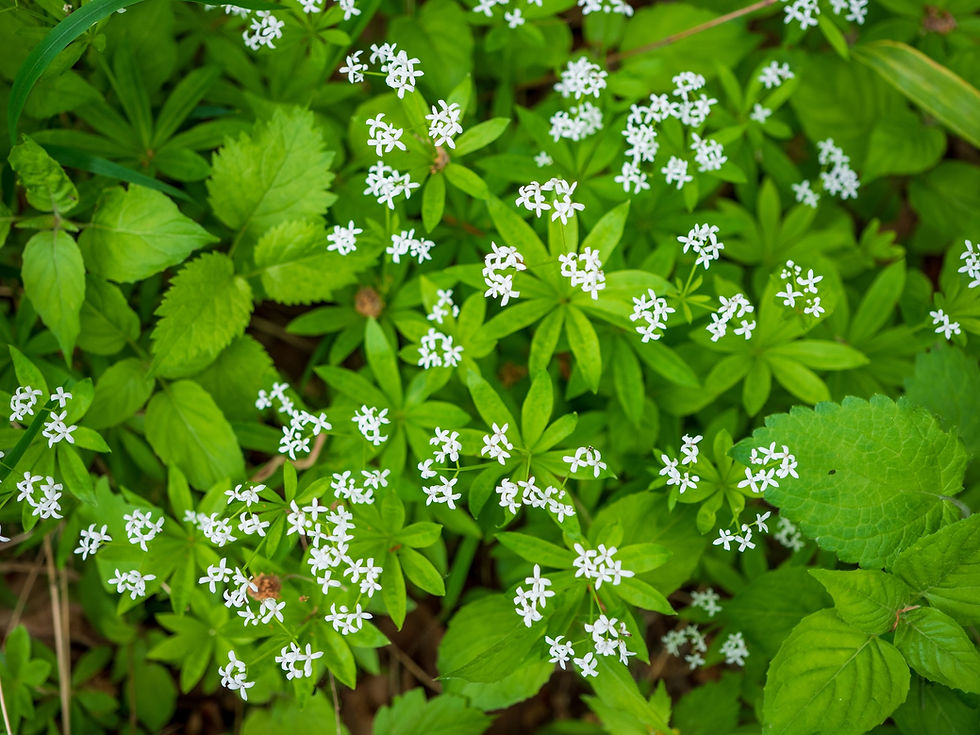Japanese Painted Fern (Athyrium niponicum var. pictum): A Hardy, Elegant Shade Accent for Atlanta's Zone 7
- Joe Frankie
- Jul 1
- 4 min read
If your shade garden needs a touch of color and sophistication, the Japanese Painted Fern (Athyrium niponicum var. pictum) is a show-stopping addition. Known for its distinctive silvery-gray fronds brushed with hints of burgundy and green, this hardy fern delivers striking foliage and easy maintenance in one graceful package.
At Chestatee Farms, we are pleased to offer this unique shade plant in 1-gallon containers for just $9.00. Adapted to thrive in the warm, humid summers and mild winters of Atlanta’s Zone 7, the Japanese Painted Fern is ideal for woodland gardens, shady borders, and even mixed containers. This perennial favorite brings color and contrast to places most perennials can’t reach—deep shade.

🧬 Botanical Background
Botanical name: Athyrium niponicum var. pictum
Common name: Japanese Painted Fern
Family: Athyriaceae (Lady Fern family)
Origin: East Asia — Japan, Korea, China
Plant type: Deciduous perennial fern
USDA Zones: 3–8
Mature height: 12–18 inches
Spread: 18–24 inches
Foliage: Silvery-gray with purple-red midribs; deeply divided, triangular fronds
Habit: Mounded, low-growing, and arching
While this fern dies back in winter, its foliage makes a dramatic appearance each spring, often intensifying in color as the season progresses. In shaded Atlanta gardens, its silver tones offer stunning contrast to deep greens and subtle flowers.
🌤️ Light Requirements
Japanese Painted Fern prefers partial to full shade, although a bit of morning sun can enhance its foliage coloration.
Ideal light: Filtered or dappled shade
Acceptable: Morning sun (before 10 a.m.) with afternoon protection
Avoid: Full sun or harsh midday exposure, which can scorch fronds
In Georgia’s Zone 7 climate, placing this fern under tall hardwood trees, near east-facing foundations, or along woodland paths ensures the right balance of shade and brightness.
🪴 Soil and Planting Conditions
This fern flourishes in loose, moist, organically rich soil with excellent drainage. While it adapts well to many soil types in the Atlanta area, proper soil prep is the key to long-term success.
Soil Needs:
Texture: Loamy or amended clay with compost or pine fines
pH: Slightly acidic to neutral (6.0–7.0)
Drainage: Critical — avoid soggy or compacted soil
How to Plant:
Dig a hole 2× as wide and equal in depth to the container.
Mix in organic matter (e.g., compost, leaf mold, or pine bark).
Place the plant with the crown just at or slightly above soil level.
Backfill and gently firm the soil.
Water deeply and apply 2 inches of mulch to retain moisture.
🧼 Watering & Moisture Management
Like many ferns, Athyrium niponicum prefers evenly moist soil, especially during establishment and Georgia’s hot summers.
Establishment phase: Water 2–3 times per week for the first 6–8 weeks.
Post-establishment: Water weekly during dry periods; avoid letting soil dry out completely.
Mulching with pine straw or bark keeps the root zone cool and helps maintain the consistent moisture Japanese Painted Fern loves.
🧪 Fertilization for Vivid Color
Fertilization isn’t essential, but a small seasonal boost enhances growth and strengthens frond color.
Organic Options:
Espoma Plant-Tone: Apply ½ cup per plant in early spring.
Compost tea or worm castings: Apply monthly during the growing season.
Fish emulsion (low nitrogen): Mix at 1 tbsp per gallon of water and apply every 3–4 weeks.
Avoid high-nitrogen fertilizers, which may cause overly soft growth or diminish the silver coloration.
🐛 Pests and Diseases (No Neem Oil Needed)
Japanese Painted Fern is generally trouble-free, but certain conditions may invite minor pests or fungal problems. Prevention starts with good spacing, mulch management, and proper watering.
🐌 Slugs & Snails
Common during rainy spring periods.
Symptoms: Holes in fronds, slime trails.
Organic Control:
Iron phosphate baits (e.g., Sluggo): Apply 1 tsp per square foot.
Copper tape around containers or raised beds.
Hand-picking in the evening.
🍄 Fungal Leaf Spot
Often caused by overcrowding or water on leaves.
Symptoms: Brown or black spots, frond decline.
Organic Control:
Copper-based fungicide (OMRI listed): Apply at 2 oz per gallon of water every 10–14 days.
Remove infected fronds and improve airflow.
✂️ Seasonal Maintenance
Spring:
Remove any lingering dead fronds before new growth emerges.
Apply compost or a fresh layer of mulch.
Summer:
Keep fronds tidy by removing any scorched or wind-damaged leaves.
Fall:
Allow fronds to age naturally. Once browned, they can be cut back to the ground.
In colder winters, the plant goes fully dormant. In Atlanta’s Zone 7, expect new growth by early to mid-April.
🪻 Companion Planting & Landscape Use
The Japanese Painted Fern’s luminous foliage makes it a standout among other shade plants. Its low, arching shape is ideal for front-of-border placement, shady containers, and layered woodland plantings.
Great Companions:
Heuchera (Coral Bells)
Hosta (Plantain Lily)
Tiarella cordifolia (Foamflower)
Pulmonaria (Lungwort)
Brunnera macrophylla (False Forget-Me-Not)
Its cool-toned foliage plays beautifully against chartreuse, burgundy, or blue-green foliage, making it a designer favorite for subtle contrasts in texture and color.
🌱 Propagation
This fern spreads slowly and remains well-behaved. It can be propagated by division every 3–4 years.
Division Instructions:
Lift the clump in early spring.
Slice into 2–4 smaller sections using a clean spade or sharp knife.
Replant immediately and keep evenly moist for the first 3–4 weeks.
Dividing regularly rejuvenates older clumps and helps maintain a vibrant appearance.
🌿 Final Thoughts
Few ferns offer the color, delicacy, and easy care of the Japanese Painted Fern. With its silver-and-burgundy hues, it brings light to even the darkest corners of a Zone 7 garden and asks for very little in return. Cold-hardy, deer-resistant, and elegantly structured, this is a fern you’ll never regret planting.
At Chestatee Farms, we’re excited to offer thriving, 1-gallon Japanese Painted Ferns for just $9.00—perfect for adding bold foliage interest to any shaded space. Whether you’re new to gardening or building out a native woodland retreat, this show-stopper will reward you year after year.



Comments